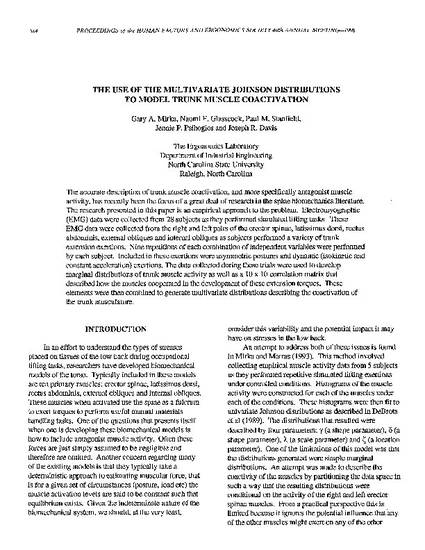
Presentation
The Use Of Multivariate Johnson Distributions To Model Trunk Muscle Coactivation
International Mechanical Engineering Congress and Exposition
(1996)
Abstract
The accurate description of trunk muscle coactivation, and more specifically antagonist muscle activity, has recently been the focus of a great deal of research in the spine biomechanics literature. The research presented in this paper is an empirical approach to the problem. Electromyographic (EMG) data were collected from 28 subjects as they performed simulated lifting tasks. These EMG data were collected from the right and left pairs of the erector spinae, latissimus dorsi, rectus abdominis, external obliques and internal obliques as subjects performed a variety of trunk extension exertions. Nine repetitions of each combination of independent variables were performed by each subject. Included in these exertions were asymmetric postures and dynamic (isokinetic and constant acceleration) exertions. The data collected during these trials were used to develop marginal distributions of trunk muscle activity as well as a 10 x 10 correlation matrix that described how the muscles cooperated in the development of these extension torques. These elements were then combined to generate multivariate distributions describing the coactivation of the trunk musculature.
Disciplines
Publication Date
November, 1996
Location
Atlanta, GA
Comments
Copyright ASME 1996
Citation Information
Gary A. Mirka, Naomi F. Glasscock, Paul M. Stanfield, Jennie P. Psihogios, et al.. "The Use Of Multivariate Johnson Distributions To Model Trunk Muscle Coactivation" International Mechanical Engineering Congress and Exposition (1996) Available at: http://works.bepress.com/gary_mirka/16/
